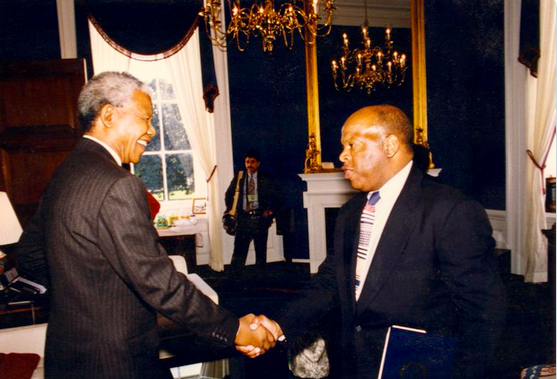Good Trouble: Lewis, Mandela and Authentic Power
John Lewis embodied a form of resistance that changed history, and a relationship to power that makes today’s so-called ‘strongmen’ look weak.

Lisa Van Dusen/For The Hill Times
July 23, 2020
John Lewis, whose scarred, unbreakable skull was a luminous monument to the “good trouble” he so passionately advocated, did not die on Mandela Day. But by the time the world heard about his death, tributes to a man whose journey had stretched from his origins as the son of an Alabama sharecropper to his time as a young lieutenant to Martin Luther King Jr. to his 17 terms in Congress were fittingly intertwining with the 102nd birthday commemorations of his fellow civil rights icon.
Lewis and Nelson Mandela followed very different paths to the same beliefs about nonviolent resistance. In June 1964, when Mandela was in Pretoria being sentenced to life in prison for conspiracy to violently overthrow South Africa’s apartheid government, Lewis, as head of the Student Nonviolent Co-ordinating Committee (SNCC), was launching “Freedom Summer” to register African-American voters in Mississippi, then ground zero of the terror and intimidation tactics used to disenfranchise Black voters.
Both men loved the poem Invictus by William Ernest Henley:
Out of the night that covers me,
Black as the pit from pole to pole,
I thank whatever gods may be
For my unconquerable soul.
When Mandela delivered his Rivonia trial speech—“I have cherished the ideal of a democratic and free society in which all persons will live together in harmony and with equal opportunities. It is an ideal for which I hope to live and to see realized. But, My Lord, if it needs to be, it is an ideal for which I am prepared to die”—Lewis, as a founding Freedom Rider, had already been beaten multiple times, spent 40 days in the Mississippi State Penitentiary for using a “whites only” restroom, and delivered his national debut speech at the March on Washington. He had not yet been billy clubbed for marching peacefully across Selma’s Edmund Pettus Bridge toward Montgomery in March 1965.
In the fell clutch of circumstance
I have not winced nor cried aloud.
Under the bludgeonings of chance
My head is bloody, but unbowed.
Mandela converted to nonviolent resistance during his 28 years in prison. Both men displayed superhuman levels of restraint in the face of physical violence in Lewis’ case and psychological warfare in Mandela’s. Mandela, whose body was so long a possession of the state, espoused Gandhi’s concept of Satyagraha, “holding fast to truth,” to protect his soul. Both men used logic to expose the absurdity of systems designed to maintain a status quo whose inherent insanity was protected by fear, denial and leveraged hatred.
Beyond this place of wrath and tears
Looms but the horror of the shade,
And yet the menace of the years
Finds and shall find me unafraid.
Lewis famously deployed his body as a lightning rod for racism and a receptacle of irrational white rage while he firewalled his mind in an impenetrable fortress of faith and love. It’s why the clip of him crowd-surfing, at 76, across Stephen Colbert’s studio audience is such a beautiful bookend to the indelible images of him sustaining the blows of a police truncheon; people propelling aloft the same body whose sacrificial depredations changed their history.
The next time a cartoon autocrat drops a ludicrous bombshell or pulls a tyrannical stunt to prove his dominance, try imagining them in the shoes of Lewis, being beaten by a mob at the Montgomery bus terminal or Mandela, being humiliated by jailers determined to break his spirit. Try to imagine them defining leadership as forgiveness and grace as strength.
It matters not how strait the gate,
How charged with punishments the scroll,
I am the master of my fate:
I am the captain of my soul.
Rest in good power.
Lisa Van Dusen is associate editor of Policy Magazine and a columnist for The Hill Times. She was Washington bureau chief for Sun Media, international writer for Peter Jennings at ABC News, and an editor at AP in New York and UPI in Washington.
